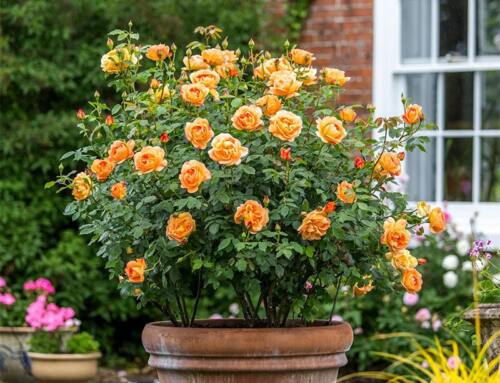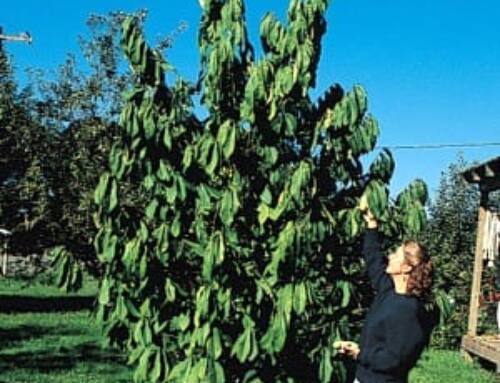How to Grow Hardy Lady’s Slipper Orchids
New hybrids make growing Cypripedium easy and rewarding
It’s never been a better time to build your interest and collection in hardy lady’s slipper orchids or Cypripedium. These beautiful and delicate perennials are well-known to many Canadian gardeners, especially those who have spent time in rural Canada or gotten out to hike in our natural spaces. Indeed, there are a number of beautiful lady’s slippers that call Canada home.
While these orchids can be grown in gardens, they are sometimes not easy for gardeners as they can have somewhat exacting needs. Not so for our wide range of hybrid Cypripedium. These plants are crosses between North American, European, and Asian species. They have great hybrid vigour making them comparatively easy to grow and quick to bulk up into impressive clumps. In fact, anywhere that ferns and Hosta do well in your garden is likely a great site for growing lady’s slipper orchids.
Read on to learn how to grow them yourself!
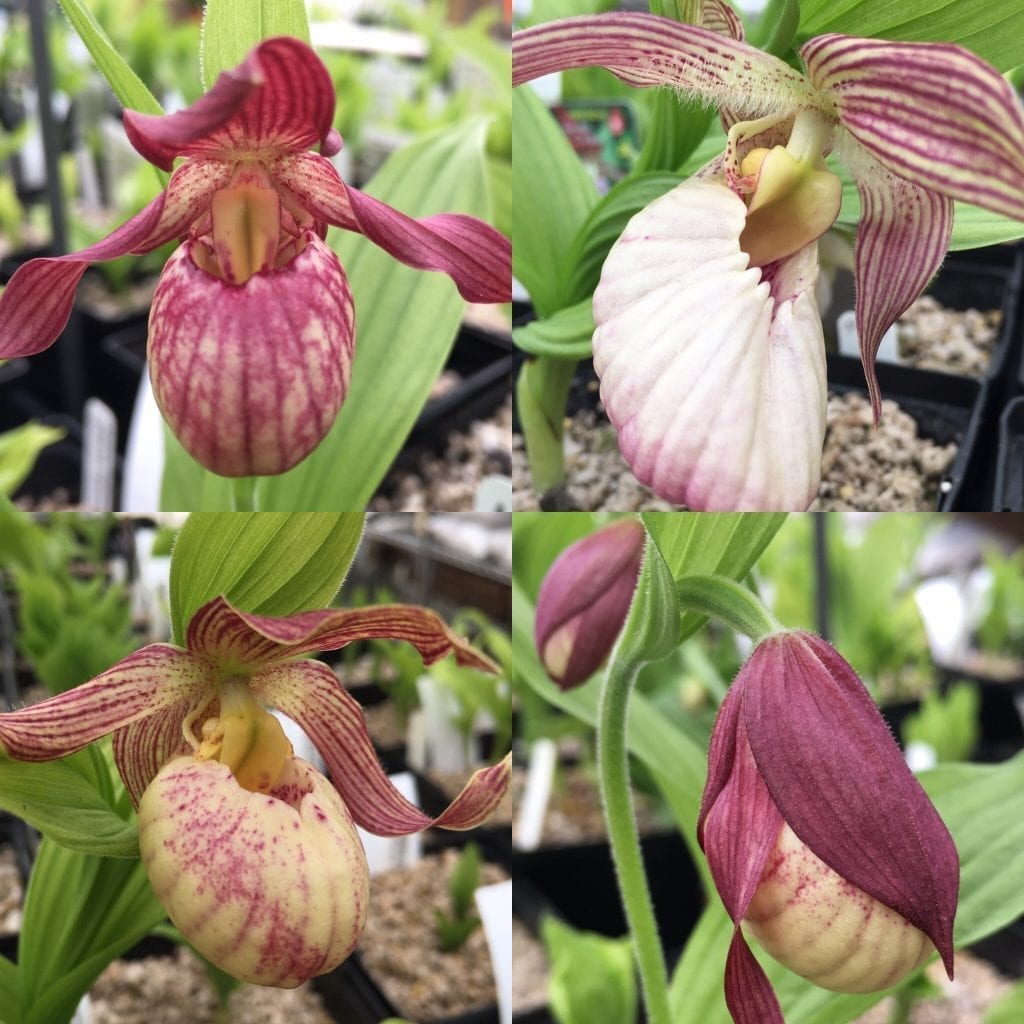
Light: Part shade or morning sun. Protect from hot afternoon sun. Plant where Hostaand ferns do well such as in bright woodland gardens or on the north side of a building with mostly open sky above.
Soil: Evenly moist but well drained, loose, friable, crumbly soils. Dense or heavy soils can be improved with pumice or chicken grit and organic matter. In regions of high rainfall, a rain cover can be placed over dormant plants. Use a piece of hard plastic or plywood sitting on bricks. Add a thin layer of conifer needles or shredded leaves in fall.
Bloom Time: Lady’s slippers bloom from late April through May and into June.

Hardiness: Cyps can be grown outdoors in most of Canada. Most should be hardy into zone 3 and often zone 2! We have many customers on the prairies growing them successfully.
Planting: Fall planting is best but early spring is also fine. Spread the roots out in the upper 10cm (4 inches) of soil and position the eyes 2-3 cm (1 inch) below the soil surface. Cover lightly with soil without compressing it and water in thoroughly.
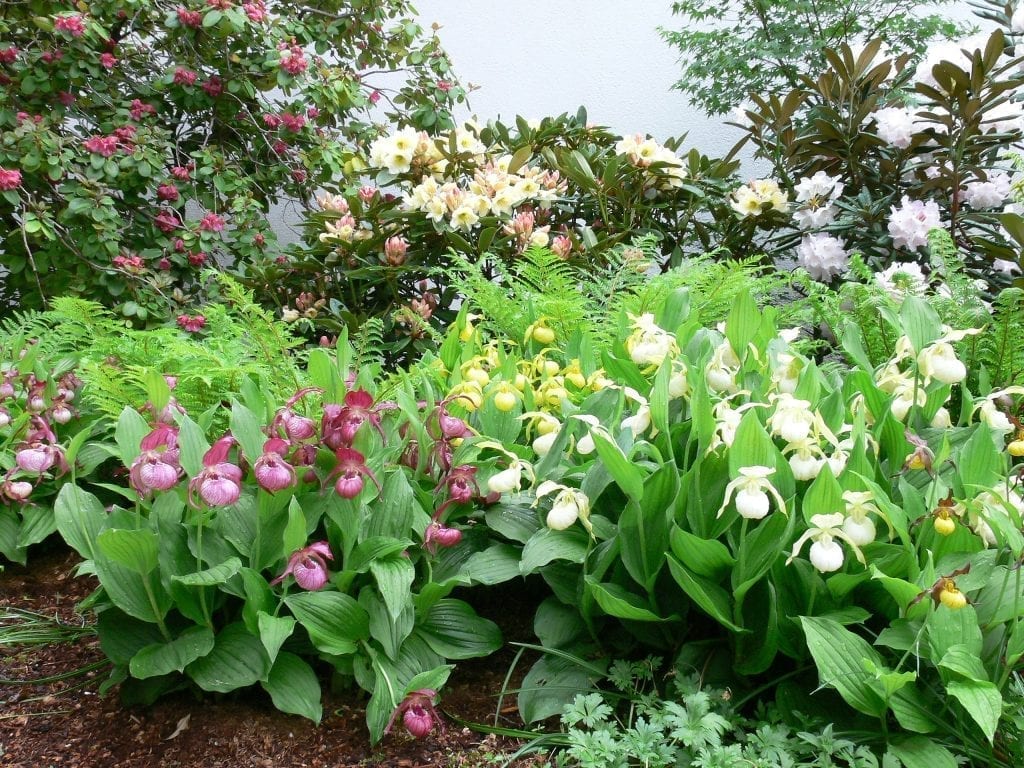
General Care: Fertilize with slow release fertilizer or begin weekly applications of water soluble fertilizer in spring as soon as new growth begins. Healthy, well fertilized plants should be bright green. A yellowish green colour denotes a fertilizer deficiency (or too much sun). Good nutrients and even moisture are necessary into summer when plants develop shoots for the following spring and new roots. Though slugs are not a big issue, it is good to be safe by applying Safer’s slug pellets.
Give lady’s slippers their space and don’t crowd them with other perennials. They have a shallow root system that can stretch one foot in all directions. Combine with groundcovers like Leptinella, Scotch and Irish moss, and Selaginellaand small perennials like Epimedium, small Hosta, and ferns. Divide your Cyps every 3-5 years in autumn to maintain vigour and health. The perfect time is just when the leaves and stems die back for winter.
Hybrid Vigour: Most of our Cypripediumare hybrids of various North American, European and Asian species. These crosses result in beautiful blooms and great hybrid vigour. Hybrid vigour means that hybrid lady’s slipper orchids are much easier to grow than species lady’s slippers and they bulk up very quickly. Well-sited and cared for hybrid Cyps can double in number of blooming stems every year. If you provide good care and divide your clump every 3-5 years you can achieve 100 blooming stems in just 10 years!
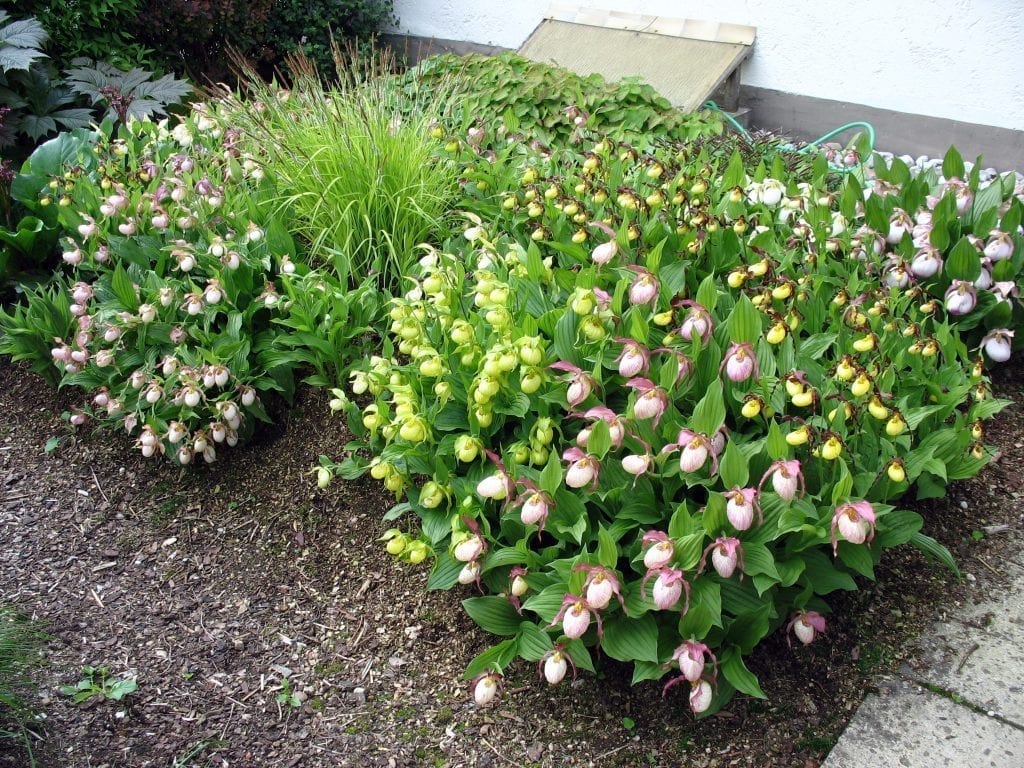
At Phoenix Perennials we have Cypripedium available two times a year. In the spring we have potted plants in bud and bloom in April and May. Then in July we launch a pre-order for our largest selection of 40-50 different bareroot Cypripedium for pick-up or shipping in early to mid October for immediate fall planting.




